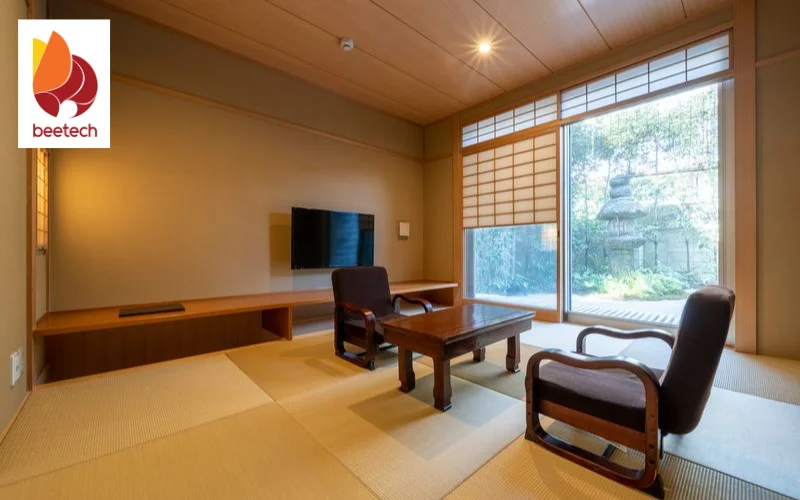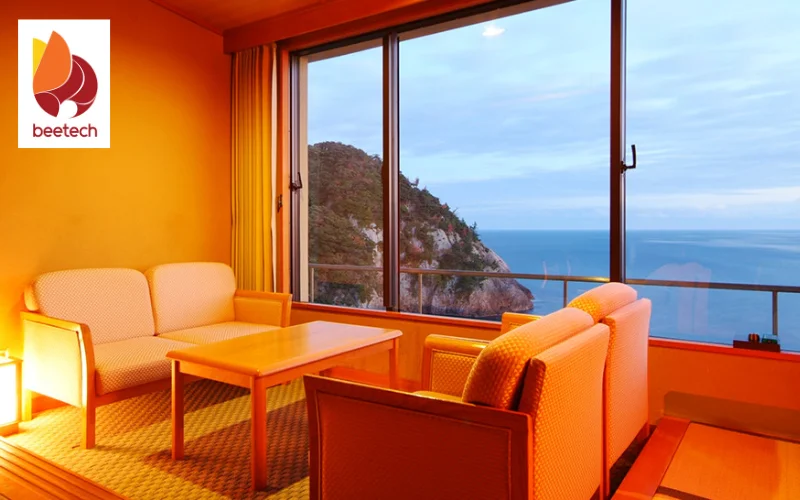Japanese hotel website: important steps for building one that stands out
Building a Japanese hotel website that stands out requires planning and attention to detail. In this article, BeetechSoft will show you the steps to building a successful one, from understanding your target audience to optimizing user experience!

1. Step-by-step guide to creating a Japanese hotel website
1.1. Understanding your target audience
Before you start designing your Japanese hotel website, it's essential to understand who your visitors are. You will need to identify target guest demographics, such as whether they are international travelers, domestic visitors, or specific groups like business professionals or families.
In addition to demographics, understanding the preferences and behaviors of your guests is crucial. Think about what your guests expect when booking a hotel in Japan. For instance, international tourists may value clear information on cultural experiences, accessibility, and popular attractions nearby.
1.2. Choosing the right platform and technology
The platform is the foundation of your website, and selecting the right one can impact the website’s functionality, design, and ease of maintenance.
For most Japanese hotel websites, popular platforms like WordPress are a great choice. WordPress is flexible, easy to use, and offers a wide range of plugins that allow you to add various features like booking systems, SEO optimization, and multi-language support.
1.3. Crafting a seamless user experience (ux)
A great UX means your visitors will easily find the information they need, navigate your site without frustration, and complete their booking smoothly. To achieve this, you must focus on two main areas: intuitive navigation and a clear layout.
Intuitive navigation is key to guiding users through the Japan hotel website with minimal effort. Think about how a guest would interact with your site. The navigation menu should be easy to find, clearly labeled, and well-organized. Common sections might include Home, Rooms, Amenities, Dining, Attractions, and Contact.

Layout is equally important. Keep the design clean, with a good balance between text, images, and space. Too much clutter can overwhelm visitors and make it difficult for them to focus on the important details. Use large, high-quality images that highlight the unique features of your hotel, such as the rooms, dining areas, and scenic views. Make sure the text is legible, with a font size that is easy to read on desktop and mobile screens.
1. 4. Including Essential Information
Start by featuring key amenities that set your hotel apart. If your hotel has a traditional Japanese onsen, a beautiful garden, or a restaurant offering authentic local cuisine, make sure these features are highlighted on the homepage or dedicated pages. Include high-quality images of these amenities to give potential guests a sense of what to expect.
>>> Read more: What do business need to do to develop a tour booking website?
Location is another crucial piece of information. Your guests will want to know where your hotel is situated, how to get there, and what attractions are nearby. A map, directions, and nearby points of interest can help guests plan their trip. You could also include information on local transportation options, such as shuttle services, public transit, or proximity to airports and train stations.
Room descriptions should be detailed and informative. For each room type, mention the size, number of beds, special features (like tatami mats, balconies, or scenic views), and the types of guests it’s ideal for (such as families, couples, or solo travelers). Include images of the rooms so guests can visualize their stay.
Lastly, don’t forget to add booking functionality. Make it as simple as possible for guests to check availability, select their preferred room type, and finalize their booking. A secure and easy-to-use booking engine will increase the chances of conversion.
2. Tips to create an effective Japanese hotel website
2.1. Incorporate local culture and aesthetics
When creating a Japanese hotel website, one of the most important aspects is aligning the design with Japanese culture, aesthetics, and values. Japan has a rich cultural heritage, and showcasing this on your website can make it stand out to both local and international visitors. The design elements should reflect the elegance, tranquility, and minimalism often associated with Japanese design.
Incorporate traditional Japanese elements like shoji screens, tatami mats, and serene color schemes such as soft neutrals and calming blues. These subtle touches help create a sense of authenticity and comfort, making the website feel welcoming and culturally relevant. Be mindful of using Japanese symbols and artwork where appropriate, as these details can evoke feelings of relaxation and elegance, which guests might expect from a Japanese hotel experience.


2.2 Focus on visual appeal
Visual appeal is critical when creating a hotel website that attracts potential guests. High-quality imagesand videos are essential for giving visitors an accurate and inviting portrayal of your hotel. Visitors should feel like they can experience the hotel just by viewing the website, so the visuals need to be professional, detailed, and true to what the hotel offers.
Use high-definition images to highlight key aspects of your hotel, such as the beautiful architecture, luxurious rooms, and scenic views. Showcase not only the physical spaces but also the unique aspects of your hotel, such as traditional Japanese gardens, onsen (hot springs), or restaurant dishes that emphasize local cuisine. Make sure the images capture the ambiance and atmosphere to allow guests to visualize themselves in your hotel.
In addition to static images, videos can significantly enhance the user experience. Offering short, high-quality videos that showcase different areas of the hotel - such as a room tour, a walk through the lobby, or a clip of guests enjoying the onsen - can make the experience feel more immersive and dynamic.
>>>Read more: Top 5 trusted software Outsourcing in Vietnam
3. FAQs
3. 1. Why is mobile responsiveness crucial for a Japanese hotel website?
Mobile responsiveness is essential because many travelers will access the website on their smartphones or tablets, especially when on the go. A responsive design ensures that the website looks great and functions properly on any device, providing a smooth and seamless experience.
3.2. What cultural elements should be considered in the design of a Japanese hotel website?
Incorporating traditional Japanese aesthetics, such as minimalism, natural materials, and calming colors, can make the website feel more authentic. Additionally, using culturally relevant language and symbols will resonate with local guests and appeal to international visitors looking for an authentic experience.
3.3. How can I make the booking process easier for users?
The booking process should be straightforward, with clear calls-to-action and a simple, step-by-step flow. Offering multiple payment options and ensuring the process is secure can help increase conversions and reduce abandonment rates.
3.4. What should be included in the room descriptions on the website?
Room descriptions should include detailed information about the room's size, amenities, and unique features, such as views or special furnishings. High-quality images should accompany the descriptions to provide guests with a visual representation of the space.
4. Conclusion
To wrap up, building a successful Japanese hotel website requires a thoughtful approach that combines cultural relevance, user-friendly design, and efficient functionality. By understanding the unique preferences of your target audience and integrating local cultural elements, you can create an inviting and authentic online experience.
If you found these tips helpful, don’t forget to like and share this article with others looking to create an outstanding Japanese hotel website! Let’s spread the knowledge and help more businesses thrive online!
